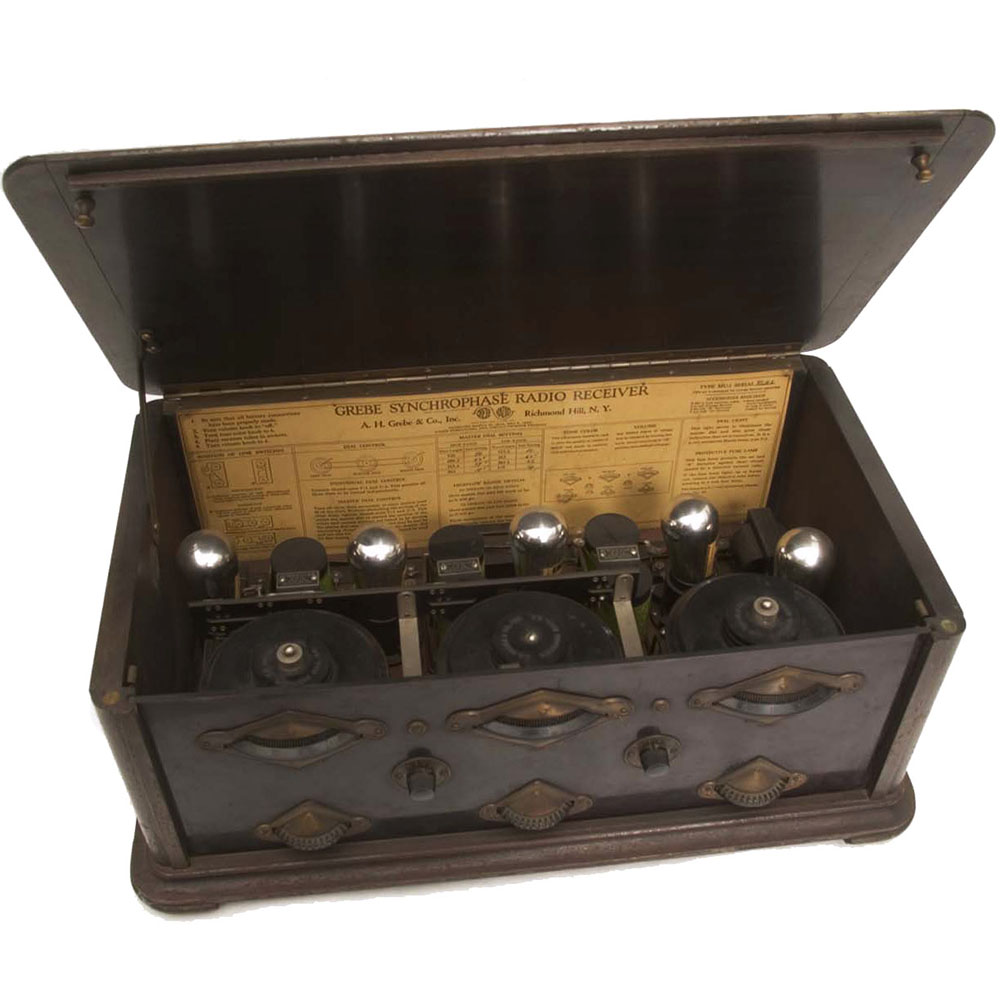A.H. Grebe & Company (1914-1933). Synchrophase Radio Receiver MU-1, 1925-1926, Museum of Innovation and Science, Gift of the American Museum of Electricity, miSci 68.797 (Photo: miSci)
This fascinating device from miSci’s collection was designed in the mid-1920s and represents a high point in radio receiver technology. The Grebe Synchrophase Radio Receiver MU-1 model was prized for its precision and ability to receive signals with only a modest antenna. The three tuning dials inside the case were originally connected by a metal chain that caused them to rotate together. The radio would be tuned by moving the central dial to a desired part of the band, and then fine-tuned using the right or left dial depending on what radio station was desired. To drive demand for the radios he was building, Alfred H. Grebe founded several radio stations near his workshop in the Richmond Hill area of Queens, New York. One of these stations, WAHG, broadcast the results of sporting events in the area and would, though a series of name changes and acquisitions, become WCBS, which is still a major radio station in the New York City area.

